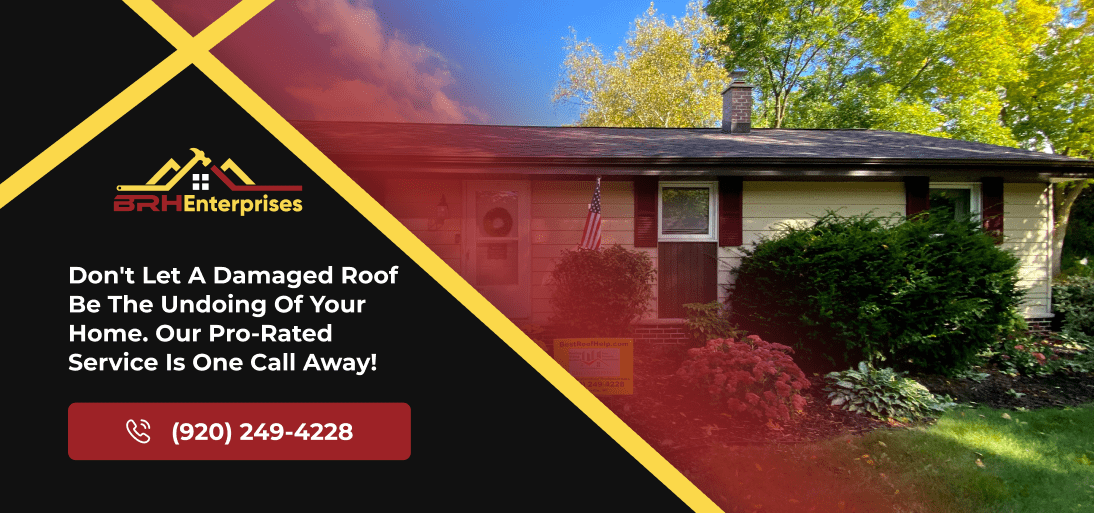Wood vs. Vinyl Siding: A Complete Cost Analysis for Wisconsin Homeowners
Estimated Reading Time : 6 Min.

Selecting the right siding material for your Southern Wisconsin home represents one of the most significant exterior investment decisions homeowners face. Wood and vinyl siding stand out as two popular options, each with distinct financial implications that extend far beyond the initial price tag. For Wisconsin residents, where seasonal temperature swings can range from below-zero winters to humid 90-degree summers, making an informed choice becomes even more critical.
Comparing the cost between wood and vinyl siding involves multiple factors uniquely relevant to our region. While the upfront costs of the material differ substantially, understanding the complete financial picture requires examining installation complexity, seasonal durability, maintenance requirements, and energy performance. Wisconsin’s climate presents specific challenges for exterior materials, with freeze-thaw cycles, humidity variations, and occasional severe weather all affecting how these siding options perform over time.
Local homeowners must consider not just today’s expenses, but also the long-term value of their choice, including lifespan expectations, repair frequency, and potential insurance impacts. Each siding material offers different advantages regarding weather resistance and thermal protection, directly impacting your home’s efficiency and comfort through harsh Wisconsin seasons. This analysis explores the comprehensive cost factors to help you determine which siding solution delivers the best overall value for your specific situation.
Initial Investment: Breaking Down Material and Labor Costs
When comparing wood and vinyl siding options for your Southern Wisconsin home, understanding the initial investment requires careful examination of both materials and labor expenses. Varieties of wood used for siding include cedar, pine, and redwood, and each comes with different prices based on quality, cut, and finish. Premium cedar typically commands higher prices than pine options, while redwood falls somewhere between the two, depending on grade selection.
Vinyl siding alternatives range from basic panels to premium insulated options and architectural styles that mimic the look of wood grain. The thickness (measured in mils) significantly influences both durability and price point, with heavier gauge products offering superior performance against Wisconsin’s extreme temperature fluctuations.
Installation complexity varies substantially between these materials. Wood siding installation demands more skilled craftsmanship, precise cutting, and additional time for proper sealing and finishing. These requirements translate to higher labor costs compared to vinyl, which typically installs more efficiently with specialized tools and fewer finishing steps. For Southern Wisconsin homes, contractors should also account for local building codes and proper weatherproofing techniques specific to our region’s climate challenges.
The total project budget will reflect these material-labor combinations, with wood generally requiring a larger upfront investment when factoring both components. Homes with complex architectural features or difficult access points may also see additional installation premiums regardless of the material choice.
Longevity and Replacement Considerations
Understanding the lifespan of your siding is crucial when evaluating long-term costs for Wisconsin homes. Wood siding typically lasts 20 to 40 years in our climate, with performance heavily dependent on maintenance quality and exposure conditions. Premium cedar may reach the upper end of this lifespan, while pine options often require replacement sooner. Vinyl siding generally offers around 20 to more than 50 years of protection, with premium products consistently outlasting wood in Wisconsin’s harsh freeze-thaw cycles and humidity fluctuations.
This difference in lifespan significantly impacts the costs you’ll pay over time. While wood siding may require complete replacement once or twice during a typical period of homeownership, properly installed vinyl might need replacement just once. When partial failures occur, wood siding often allows for section-by-section replacement, though matching aged wood can prove challenging. Vinyl replacement typically involves larger sections due to weathering patterns and color matching limitations.
The financial implications of premature failure can be substantial. Wisconsin’s extreme seasonal shifts can accelerate wear on improperly maintained wood siding, potentially leading to unexpected replacement costs. Water infiltration that’s causing siding to fail may lead to extensive repairs beyond just the siding itself. Even with proper maintenance, most Southern Wisconsin homeowners should budget for at least one complete siding replacement if they plan to stay in their home for several decades, making the initial material choice a critical long-term financial decision.
Maintenance Requirements and Associated Expenses
Wood siding demands a significant maintenance commitment from Wisconsin homeowners facing the region’s challenging weather patterns. Every 3 to 5 years, wood requires repainting or restaining to maintain its protective barrier against moisture. The painting process involves thorough cleaning, scraping loose paint, sanding rough areas, priming, and applying multiple finish coats. Between these major maintenance cycles, annual inspections are necessary to identify warping, splitting, or insect damage requiring prompt repairs.
Wisconsin’s freeze-thaw cycles particularly put stress on wood siding, forcing moisture into tiny cracks that expand when frozen. This often leads to more frequent touch-ups and repairs compared to milder climates. Additionally, our humid summers create ideal conditions for mold and mildew growth on wood surfaces, requiring periodic cleaning with appropriate solutions.
In contrast, vinyl siding maintenance consists primarily of occasional cleaning with soap and water or a pressure washer on low settings. No painting is required throughout its lifespan, and repairs are typically limited to replacing individual panels damaged by severe impacts. For Southern Wisconsin homeowners, this minimal maintenance profile translates to substantial time and cost savings over decades of ownership.
The maintenance difference becomes particularly apparent when calculating lifetime expenses. While vinyl may require simple cleaning once or twice annually, wood’s recurring treatment cycles add up significantly, making maintenance considerations a crucial factor in the wood versus vinyl decision for Wisconsin properties.
Energy Efficiency Impact on Utility Costs
Siding material choices significantly influence your Wisconsin home’s thermal performance and monthly energy bills. Wood siding typically provides an R-value between R0.8 and R1.0 when installed without additional insulation. While modest, wood’s natural insulating properties offer some resistance against Wisconsin’s temperature extremes. Vinyl siding alone provides approximately R0.6, slightly less than wood, but modern insulated vinyl options can dramatically increase this to R2.0 to R4.0, offering substantially improved thermal barriers.
This means that homes with standard vinyl siding may experience more heat loss than those with wood siding, while insulated vinyl significantly outperforms both alternatives. Summer cooling efficiency follows similar patterns, with insulated vinyl helping maintain consistent indoor temperatures despite humidity and heat waves common in Southern Wisconsin.
The impact on energy costs becomes substantial over time. Wisconsin homeowners frequently report around a 5% to 15% reduction in heating and cooling expenses after upgrading to insulated vinyl siding from older, less efficient materials. This translates to meaningful utility savings that accumulate across decades of homeownership. For a typical Wisconsin home, these savings can offset a significant portion of the initial installation investment difference between standard and insulated options.
When evaluating siding options, consider requesting an energy efficiency assessment to quantify potential savings specific to your home’s construction, orientation, and existing insulation levels. This personalized data provides valuable context for making the most economical long-term decision.
Weather Resistance and Damage Repair Costs
Wisconsin’s weather puts exterior siding to the ultimate test. Wood siding, while naturally beautiful, shows vulnerability to our region’s weather extremes. Heavy snow, ice, and moisture can enter the wooden fibers, causing swelling, warping, and potential rot over time. Hailstorms frequently result in dents, cracks, and chips that require prompt attention to prevent water infiltration. When damage occurs, repairs typically involve replacing individual boards, sanding, and refinishing, which can be labor-intensive and expensive.
Vinyl siding demonstrates superior resilience against Wisconsin’s seasonal weather patterns. Its water-resistant properties prevent moisture absorption during spring thaws and summer downpours. While not immune to damage, vinyl typically only becomes damaged from extreme impacts like large hail or fallen branches. When repairs become necessary, they generally involve replacing individual panels rather than extensive restoration work, significantly reducing repair expenses over time.
Insurance companies also tend to favor vinyl in many cases. Some Wisconsin insurance providers offer premium discounts for homes with impact-resistant vinyl siding due to reduced chances that you’ll need to file a claim. Wood-sided homes sometimes face higher premiums reflecting their increased vulnerability to weather-related damage and fire risk. Local homeowners report that severe weather events like the intense storms that occasionally sweep through Southern Wisconsin often result in more substantial claims for wood siding repairs compared to vinyl alternatives, making the long-term insurance cost differential another important factor in the overall expense comparison.
Return on Investment and Property Value Impact
When evaluating wood versus vinyl siding through the lens of property value, Southern Wisconsin real estate professionals consistently report that material choice significantly influences buyer perceptions. Wood siding, particularly cedar and other premium varieties, typically adds distinctive character that many buyers associate with higher-quality construction. In certain Madison and Lake Geneva neighborhoods, properly maintained wood siding can bring in 2% to 4% higher price at resale, especially on historic or architecturally significant homes.
Vinyl siding delivers different value to prospective buyers. Homes with premium vinyl installations appeal strongly to buyers seeking low-maintenance properties. While not typically generating the same initial “wow factor” as pristine wood, vinyl’s practical benefits translate into strong value retention, with real estate data showing these homes sell just as quickly as wood-sided alternatives in most Wisconsin markets.
The ROI timeline varies significantly between these options. Wood siding’s higher initial investment may require 7 to 10 years to fully recoup through appreciation, while vinyl’s lower upfront costs and maintenance expenses can yield positive returns in as little as 5 to 6 years. For homeowners planning to sell within 3 to 5 years, properly maintained wood siding might offer slight advantages in certain upscale markets, while those settling in for the long term typically find vinyl’s lifetime value more compelling when factoring in maintenance costs and durability.
Discover the Best Siding for Your Wisconsin Home
If you’re a homeowner in Southern Wisconsin weighing your siding options, understanding the cost implications of wood versus vinyl siding is crucial. BRH Enterprises LLC offers comprehensive services that cater to your specific needs, ensuring you choose the right siding that balances cost, durability, and aesthetic appeal. We break down the initial investment, long-term maintenance costs, and potential savings on energy bills to help you make an informed decision.
Don’t let the complexity of choosing the right siding overwhelm you. Call BRH Enterprises LLC today at (920) 249-4228 to discuss your siding options and find the most cost-effective solution for your home.


